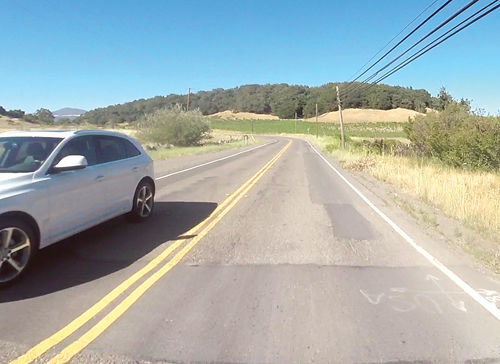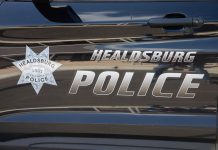
$5 million in north county repairs set for next summer
Some of the worst and most travelled roads around Healdsburg and Cloverdale in the Fourth Supervisorial District are slated for repair and repaving over the next two summers. Most of the work will be done next summer while planning will be done this year.
During budget negotiations the Sonoma County Board of Supervisors decided on where to spend about $21 million in the next fiscal year, from July 1, 2016 to June 30, 2017.
In the Fourth District, $5.09 million will pay for road repairs and maintenance; county roads around Healdsburg will see $930,000. All work and costs are preliminary at this time.
The biggest project near Healdsburg is the 0.19-mile stretch of Healdsburg Avenue from the city limits to Alexander Valley Road, which will get new asphalt overlay at a cost of $330,000. On Lytton Springs Road from Dry Creek Road to Healdsburg Avenue $315,000 will be spent on chip sealing the road.
Fourth District Supervisor James Gore acknowledged concerns that he receives about chip sealing roads that have lower speed limits and do not require full repaving. “I definitely get people, like on Chalk Hill Road, who call me and say ‘Why did you put this chip seal on instead of asphalt?’” said Gore.
“Because that’s what that road was engineered for, number one, and number two is people complain about chip sealing right when it’s put in.” Gore said that people might be concerned that the chip sealing is not adequate because some of the tiny rocks (chips) in the mix break loose and flake off. “After it’s got some heavy traffic, it settles in,” said Gore.
More than half a mile of road from Highway 128 to Red Winery Road on Geysers Road will be chip sealed at a cost of $85,000. A 2.11-mile stretch of Old Redwood Highway that connects Windsor to Healdsburg will get a $200,000 Fog Seal.
Sonoma County Transportation and Public Works describes Fog Seal as “a very thin layer of asphalt emulsion applied to the pavement. Fog Seals are dilute and set very slowly. Due to their slow rate of setting, Fog Seals are best suited for low-volume roads that can be closed for several hours.”
“We need to focus on roads that serve a lot of residents and have a of vehicle miles travelled,” said Gore.
The lion’s share, $3.61 million, or 70 percent, of north county funds are going to roads around Cloverdale. “It shows the importance of having a strong voice when you get into these thing because the first series of roads that were presented to me didn’t have Cloverdale on the list,” said Gore. “So I sent that back and said that Cloverdale has been forgotten for too long … it’s time for us to pony up. If you look at roads funding over the past five years, Cloverdale isn’t even on the map.”
Three stretches of River Road outside Cloverdale will receive asphalt overlay. The longest segment runs more than four miles, from Crocker to Washington School Road at a cost of $1.1 million and will be a combination of overlay and chip seal. More than half a mile from Crocker to Big Sulphur Creek Bridge will be repaved ($440,000), as well as a quarter of mile from Big Sulphur Creek Bridge to Geysers Road ($210,000).
Crocker Road from River Road to the Cloverdale city limit, 0.69 miles, will get asphalt overlay costing $440,000.
Hot Springs Road from Cloverdale city limits to the first cattle guard, 1.31 miles, will be repaved costing $880,000. Dutcher Creek Road from Dry Creek Road, a five-mile stretch will be chip sealed for $540,000.
Gore said state funding is not distributed in a way that works out well for Sonoma County. He drew a comparison to Orange County, with a population six times greater than Sonoma County but with less 300 miles of county maintained roads. Sonoma County has nearly 1,400 miles of roads in unincorporated (county) areas. “Our biggest problem is that these roads were forgotten for more than a decade, and once they got to that point the investment that they needed was astronomical,” said Gore. “You can’t depend on the state anymore to do your roads,” said Gore about dwindling gas tax funding.
“The idea is once you get these roads to a high quality level, it costs less to keep them intact. If you let go beyond a certain point, you shoot yourself in the foot because then you have to go back and repair everything,” said Gore.








